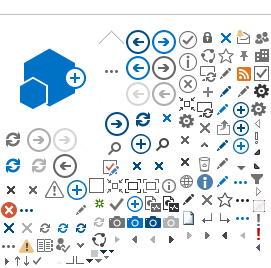Understanding how biological membranes behave is central to challenges such as drug delivery, antibiotic resistance, and vaccine design. At ISIS, neutron reflectometry provides powerful experimental data on these systems but it's challenging to interpret this to reveal the underlying molecular behaviour. By providing atomistic detail under the right conditions, Molecular Dynamic (MD) simulations can fill that gap.
The idea of combining the two approaches first took shape during a pre-pandemic meeting where Arwel Hughes from ISIS and Martyn Winn from SC met to discuss atomistic modelling for reflectometry. An Ada Lovelace Centre (ALC) grant gave their partnership its first momentum, creating space to this ambitious idea. While the funding for the project has since evolved, the collaboration remains strong, with them still working side by side.
Traditionally, researchers analyse reflectometry data using “slab-models" where complex layers of molecules are simplified into blocks with average properties, such as thickness and density. While this method is quick and practical, it inevitably strips away molecular detail.
The ISIS-SC collaboration set out to go further. Their ambition was to replace slabs with atomistic simulations that represent every atom in the system. This would not only improve the accuracy of reflectometry analysis but also open the door to extracting new physical and chemical insights.
At first the plan seemed straightforward: running simulations of lipid monolayers, comparing them with neutron data and combining the results. But the team quickly discovered that this comparison step was far from simple. If the simulations did not match the precise experimental conditions, the outcomes could be misleading. This realisation was a turning point. Rather than treating simulations as approximate guides, the researchers decided to fit their simulations directly to the experimental data. In practice, this meant reproducing the exact compression states of the monolayers, the area per molecule measured in the experiments and running MD simulations under those same conditions. Only then did the simulations begin to align with the reflectometry curves.
Their resulting paper demonstrates why this careful matching is so important. When aligned with experiments, the MD simulations provide rich molecular-level insights that neutron data alone cannot deliver. The team could extract information such as how quickly lipids diffuse, how hydrocarbon chains tilt, and how disordered the molecules become under compression.
Crucially, the study showed that using mismatched simulations can lead to false conclusions. Properties like diffusion coefficients and chain disorder vary significantly with molecular packing. Without fitting simulations to experimental data, any downstream analysis could be wrong. This could have serious consequences in fields like drug delivery, where understanding membrane behaviour is vital.
Beyond the scientific results, the collaboration has reshaped how facilities like ISIS and SC work together. In the past, computational support often came through small, disconnected projects funded for short periods.
“This work has been a shift towards a more integrated approach, where experimental facilities and computational expertise are joined in long-term programmes," explains Arwel. “The benefits for end users are significant. Instead of collecting data at ISIS and taking it away for analysis months later, the vision is for researchers to increasingly combine data collection and analysis on site."
“What began as an informal discussion has now matured into a significant programme of work," adds Martyn. “Our long-term goal is to build a unified framework for modelling biological systems across multiple experimental probes."
Their work not only sets new standards for data interpretation but also points the way toward a future where experiment and computation are seamlessly integrated to solve some of biology's most pressing challenges.
